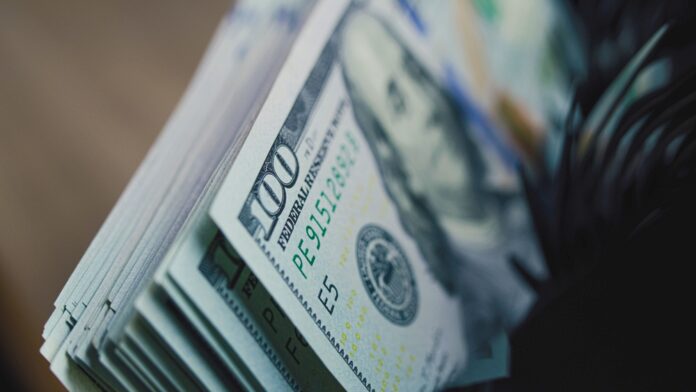The U.S. dollar edged higher on Monday, recovering from a four-month low, though it remained under pressure amid concerns that the Trump administration’s trade policies could weigh on economic activity in the world’s largest economy.
As of 04:10 ET (09:10 GMT), the Dollar Index, which measures the greenback against a basket of six major currencies, rose 0.1% to 103.959, slightly above last week’s four-month low.
Dollar Stabilizes After Recent Decline
The U.S. dollar managed to halt its recent slide, gaining some ground after a month-long decline driven by uncertainty surrounding President Donald Trump’s trade policies and their potential economic impact.
In an interview with Fox News on Sunday, Trump refrained from predicting whether the U.S. economy could enter a recession following his tariff measures on Mexico, Canada, and China.
Last week, the dollar suffered a sharp 3% drop against major rivals, marking its weakest weekly performance since November 2022.
Market focus now shifts to Wednesday’s February Consumer Price Index (CPI) report, which could provide insight into the Federal Reserve’s future monetary policy stance.
“The core rate is expected to remain sticky at 0.3% month-on-month,” analysts at ING noted, reinforcing Fed Chair Jerome Powell’s recent comments that the central bank is in no rush to cut interest rates.
Euro Pulls Back After Strong Rally
In Europe, EUR/USD dipped 0.2% to 1.0816, retracing slightly after posting its strongest weekly performance since 2009, fueled by Germany’s fiscal policy shifts.
Germany’s election winner, Friedrich Merz’s conservatives, and the Social Democrats concluded initial coalition talks on Saturday, aiming to finalize an agreement before next week. Their central theme is relaxing Germany’s borrowing limits to sustain economic growth.
On Tuesday, investors will closely monitor a high-level meeting in Saudi Arabia, where U.S. and Ukrainian officials will continue negotiations on Ukraine-Russia peace efforts.
“We anticipate EUR/USD consolidating within the 1.0770–1.0850 range at the start of the week,” ING analysts added. “A further leg higher will likely require hawkish signals from ECB officials or meaningful progress in Saudi Arabia, rather than U.S. macroeconomic developments.”
Meanwhile, GBP/USD declined 0.3% to 1.2880, giving up some recent gains after sterling touched a four-month high of 1.2946 earlier in the session.
Yen Strengthens on Safe-Haven Demand
In Asia, USD/JPY fell 0.6% to 147.17, nearing its lowest level since early October.
The yen strengthened due to increased safe-haven demand, reflecting fragile global economic prospects. Additionally, speculation remains that the Bank of Japan may continue hiking interest rates, despite January’s wage data falling slightly below market expectations.
Conversely, the Chinese yuan weakened, with USD/CNY climbing 0.4% to 7.2655, following disappointing inflation data.
Consumer and producer inflation fell short of expectations in China in February, suggesting lingering but not accelerating deflationary pressures, despite Beijing’s stimulus efforts. Measures, including subsidies on discretionary goods, aim to boost domestic consumption, yet market concerns persist.



